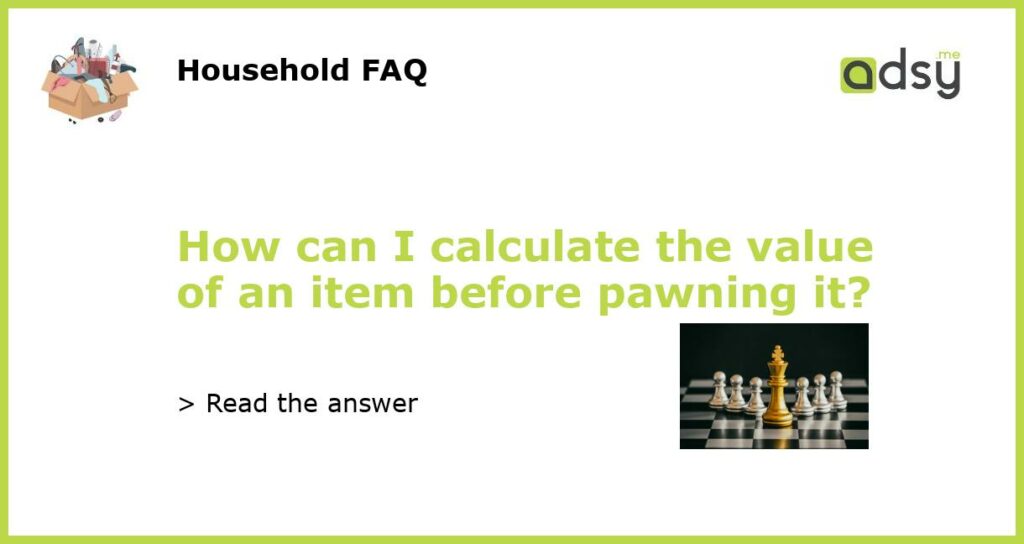Understanding the Pawn Shop Process
Before we dive into calculating the value of an item before pawning it, let’s first understand the basic process of a pawn shop. Pawn shops provide short-term loans to individuals in exchange for valuable items. These items act as collateral for the loan, and if the borrower fails to repay the loan within the agreed-upon terms, the pawn shop can sell the item to recover their money.
When you pawn an item, the pawnbroker will assess its value and determine how much they are willing to lend you. The loan amount is usually a percentage of the item’s appraised value. It’s important to note that the pawn shop’s appraisal may be lower than the item’s market value since they need to consider the potential risks and costs associated with reselling the item, as well as their profit margin.
Research the Market Value of the Item
Before pawning an item, it’s crucial to research its market value. This will give you a baseline understanding of how much the item is worth in the current market. Online marketplaces, such as eBay or Amazon, can provide you with insights into the price range for similar items. You can also check out specialized websites or forums dedicated to specific item categories, such as watches, jewelry, or electronics, to understand the market trends and values.
By having a clear idea of the item’s market value, you’ll be better equipped to negotiate with the pawn shop and understand the fairness of their appraisal. Remember, the pawn shop’s appraisal will likely be lower than the market value, so manage your expectations accordingly.
Assess the Item’s Condition and Demand
While researching the market value, also consider the condition of your item and its demand in the market. Items in excellent condition will generally have a higher value compared to those in poor condition. This applies to various types of items, such as electronics with minimal wear and tear, jewelry without visible damage, or antiques with intact original components.
Additionally, the demand for certain items may fluctuate over time. This can be influenced by factors like current trends, scarcity, or popularity. For example, if you’re pawning a popular smartphone model shortly after a new release, its value may be higher due to the demand from buyers who don’t want to pay full retail price.
Consult Multiple Pawnshops
To get a fair assessment of the item’s value, it’s advisable to consult multiple pawn shops. Different pawn shops may have varying levels of expertise or specialties, which can affect their appraisal. By visiting multiple pawnshops, you can compare their offers and choose the one that offers the best value for your item.
When visiting pawnshops, be prepared to provide detailed information about the item, including its brand, model (if applicable), age, condition, and any accompanying accessories or documentation. This information will enable the pawnbrokers to make a more accurate appraisal.
Negotiate the Loan Amount
Once you have gathered information about the item’s market value and consulted multiple pawn shops, it’s time to negotiate the loan amount. Keep in mind that pawn shops are businesses, and they aim to make a profit. However, negotiating is not uncommon in this industry.
Start by presenting the research you’ve done on the item’s market value and highlight any unique features or factors that contribute to its worth. Be respectful but firm in stating your desired loan amount. It’s important to know your limits and understand the pawn shop’s business perspective. If the initial offer doesn’t meet your expectations, you can politely decline and try your luck at another pawn shop. Remember, you have the option to seek a loan from multiple pawn shops until you find the offer that suits you best.






